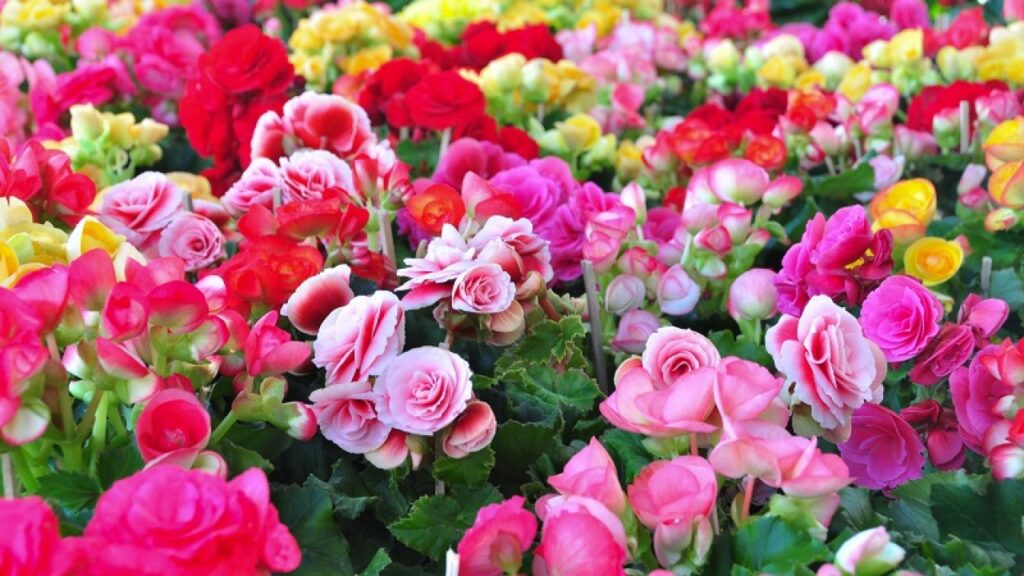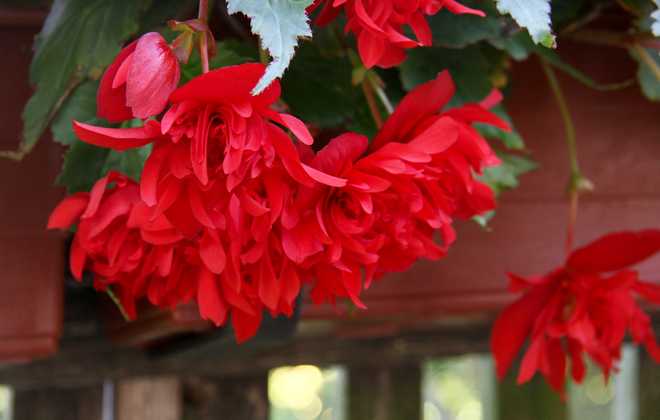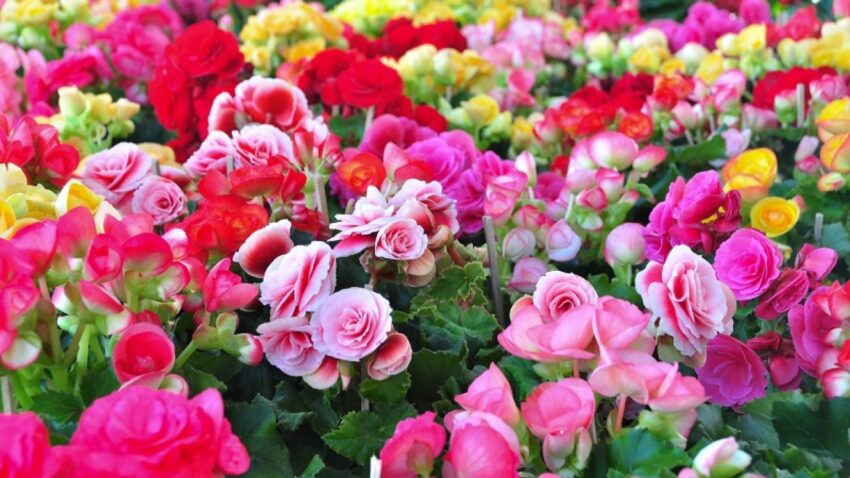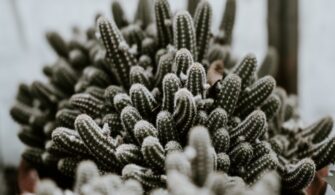
Native to South America, the tuberous begonia is a perennial plant valued in pots, hanging plants, planters, and even in borders for the bright colors of its large flowers.
In summary:
Botanical name: Begonia x tuberhybrida
Common Name: Tuberous Begonia
Family: Begoniaceae
Height x width : 60 cm high and about wide. The tubers re-start in mid-spring and develop brittle stalks. In summer, they take on a drooping habit because of the heavy weight of the flowers.
Blossoms: The bulbous begonia’s large single or double blooms are beautiful all summer and cover almost the entire color palette of the rainbow, with the exception of blue.
Foliage: Deciduous, mid-green leaves.
Exposure : In the shade or penumbra. Begonias are valuable for keeping a shady bed in bloom for a very long time. This is largely the reason for their success.
Soil : Humus-rich soil, stays fresh but well-drained.
Hardiness : Frost, 0°C
Contents
Tuber begonia: overwinter
After flowering, tuberous begonias go dormant.
The tubers are then dug up in the beds with a spade fork in autumn in order to overwinter them dry and protected from frost. The pots are overwintered with the geraniums.

How does tuberous begonia germinate?
Restarting overwintered begonias is slow. In order for them to have developed sufficiently before planting in May, they must be picked early and germinated at the end of winter (February) in a bright, warm room.
Start by sorting the tubers:
- Dispose of desiccated and stunted ones
- If patches of rot have appeared, trim the damaged area cleanly with a knife and then run a brush soaked in Bordeaux mixture over the wound or cover with wood ash.
Then fill a wooden box or container with a mixture of potting soil and sand.
Bury the bulbs barely side by side, with no contact between them. Care must be taken to ensure that they are placed the right way up, with the slightly hollowed side facing up.
Store in bright light but out of direct sunlight.
Water regularly to keep the soil and sand mixture moist, but be careful not to wet the tubers to avoid rotting.
Small red eyes appear. Each forms a new leaf shoot.
Keep it in bright light so they don’t fade.
Before the final planting in May, after the end of the frosts, do not give fertilizer.
Maintenance
- Add geranium fertilizer once a month from May through September if growing in containers.
- Regularly clean faded flowers so that new flowers appear.
- To prevent the stems of large-flowered begonias from breaking, pin them from the start of vegetation.
- Water regularly to keep the soil fresh, but not excessively.
Diseases: powdery mildew, gray rot
Powdery mildew occurs primarily in hot, dry weather and when the plant is dehydrated.
The situation is completely different with gray rot, which occurs when too much water is poured or the roots remain submerged.
We act mainly in prevention because once installed these diseases are difficult to eliminate.
- Treat your plants regularly in spring and summer with field horsetail or, for more efficiency, with Bordeaux mixture.
- If you are growing your begonias in pots and the weather is very rainy, place them under an eaves or on a sheltered windowsill.
- Water your plants from the neck and be careful to avoid wetting the leaves.
Pruning tuberous begonia
It takes place in February on germinated begonia bulbs. This is a high heel cut. Follow these steps:
- Using a knife, cut off a piece with some leaves and small roots.
- Repot immediately into a small pot filled with a mixture of potting soil and sand.
- Water lightly
- Simmer in full light, under a glass cloche or a cut plastic bottle.
- Keep warm, moist potting soil. Air often to avoid rot.
- Plant in a pot in May.

The Begonia tuberhydrida: a large family!
Bulbous begonias fall into several groups depending on the type of flowers they bear.
Camellia and rose begonias
This is the most important group and also offers the most beautiful flowers, up to 15 cm in diameter, mostly double. In many varieties, the small female flowers are solitary and grow on either side of the larger, double male flower. It is necessary to remove these female flowers as soon as they seem to favor the size of the male flower. All colors are possible. This group even features an elegant yellow bulbous begonia that is very bright and trendy!
Begonia Picotee
Its flowers are mostly double and easily identified by their petals, which have a darker border around their edges.
Begonia multiflora
These are bulbous begonias with single flowers grouped in numbers on the stems. They are grown in the same way as the others but require more stakes as they tend to sag under the mass of buds.
Begonia pendulum
They are smaller than the others and their branches naturally hang down. Like Surfinia petunias, they are therefore used to form beautiful hanging flower cascades or planters, especially as the range of colors is huge!




